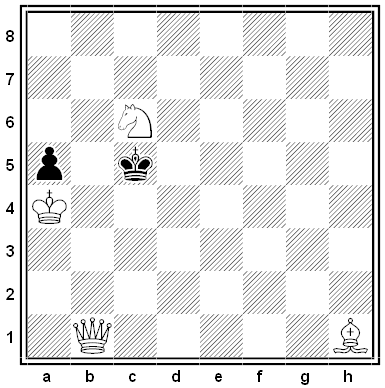Puzzles
A Clueless Crossword
Sold!

An old “puzzler” from NPR’s Car Talk:
Thirty buyers attended an auction of dozens of cars. Ten of the buyers bought fewer than 6 cars; eight bought more than 7 cars; five bought more than 8 cars; and one bought more than 9 cars.
Of the 30 buyers, how many bought 6, 7, 8, or 9 cars?
Running Cargo
This passage is from Rudyard Kipling’s 1910 story “Brother Square-Toes.” What’s notable about the bolded section?
‘I’ll have to bide ashore and grow cabbages for a while, after I’ve run this cargo; but I do wish’ — Dad says, going over the lugger’s side with our New Year presents under his arm and young L’Estrange holding up the lantern — ‘I just do wish that those folk which made war so easy had to run one cargo a month all this winter. It ‘ud show ’em what honest work means.’
‘Well, I’ve warned ye,’ says Uncle Aurette. ‘I’ll be slipping off now before your Revenue cutter comes. Give my love to sister and take care o’ the kegs. It’s thicking to southward.’
Black and White
Hope and Change
Just stumbled across this in an 1889 newspaper:
To those who love mathematics, here is a simple problem for you to figure out: A man purchased groceries to the amount of 34 cents. When he came to pay for the goods he found that he had only a $1 bill, a 3-cent piece and a 2-cent piece. The grocer, on his side, had only a 50-cent piece and a quarter. They appealed to a bystander for change, but he, although willing to oblige them, had only two dimes, a 5-cent piece, a 2-cent piece and a 1-cent piece. After some perplexity, however, change was made to the satisfaction of everyone concerned. What was the simplest way of accomplishing this?
($1 is worth 100 cents, a quarter 25 cents, and a dime 10 cents.)
Figures

I think Jacques Jouet was the first to notice this. In the first few pages of the Tintin adventure The Secret of the Unicorn, as Tintin visits the Vossenplein antique market in Brussels, Snowy the dog keeps scratching himself. Why?
Black and White
Podcast Episode 184: Lateral Thinking Puzzles

Here are six new lateral thinking puzzles — play along with us as we try to untangle some perplexing situations using yes-or-no questions.
Eban Numbers
What number comes next in this sequence?
2, 4, 6, 30, 32, 34, 36, 40, 42, 44, 46, __





